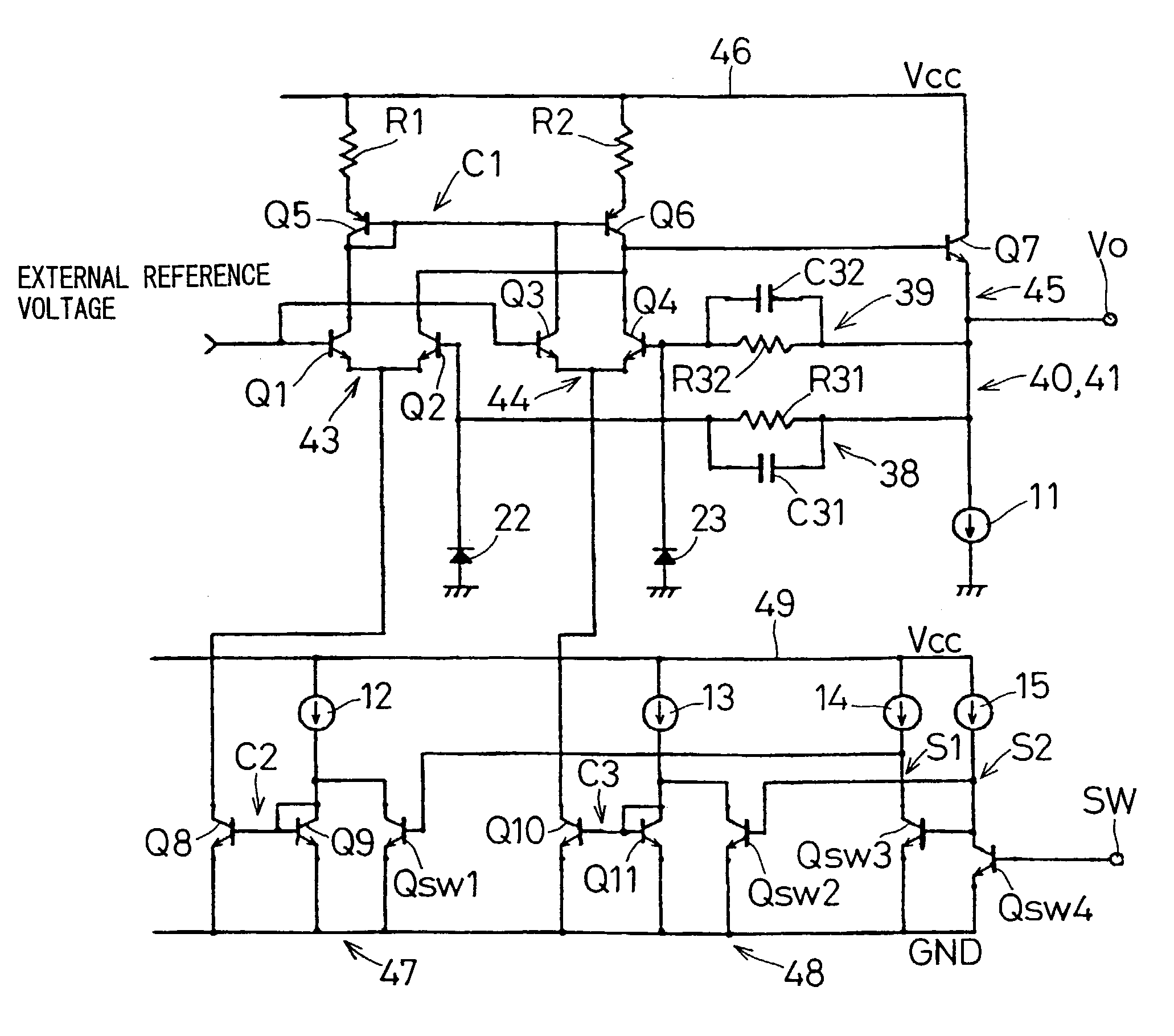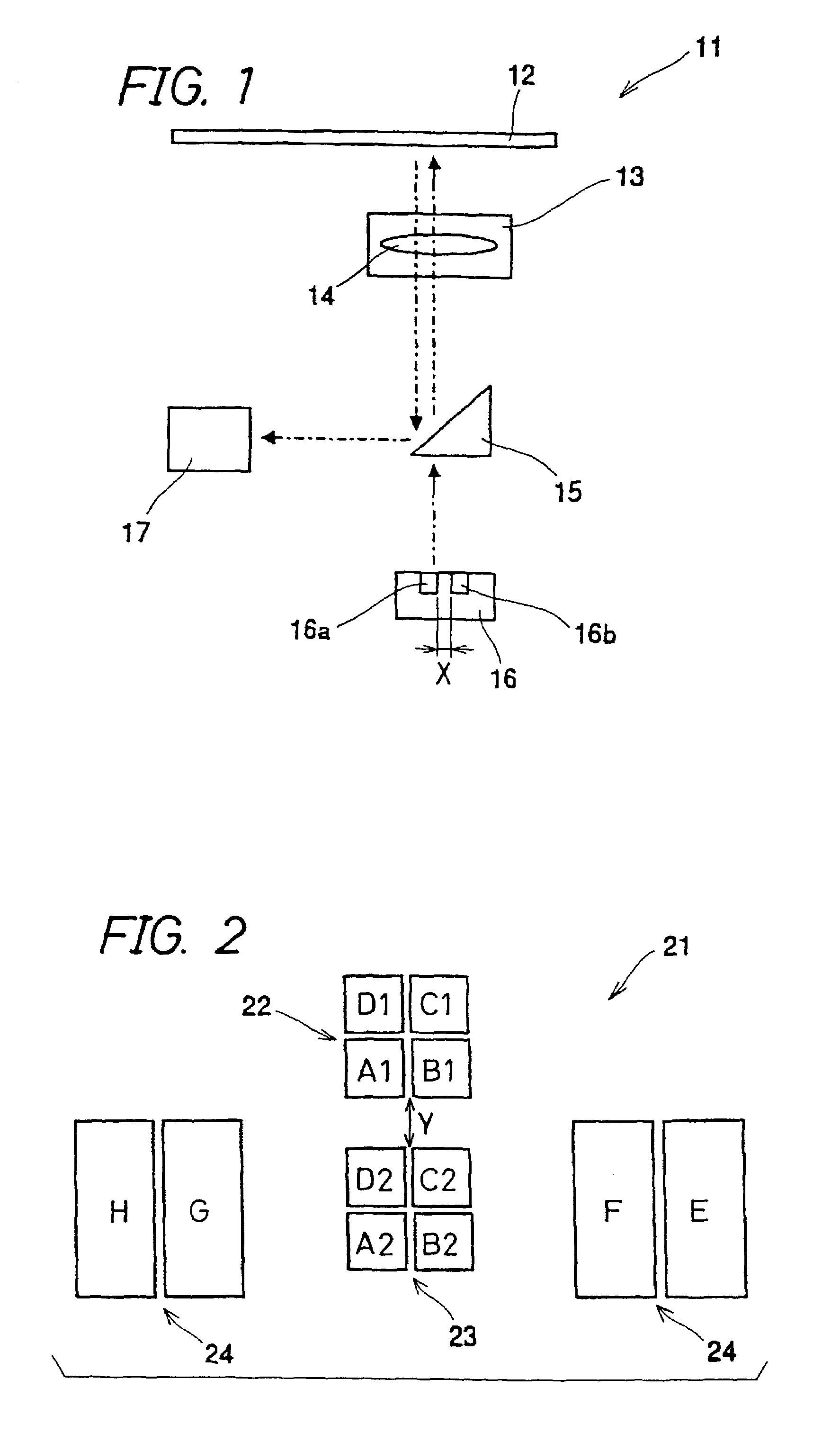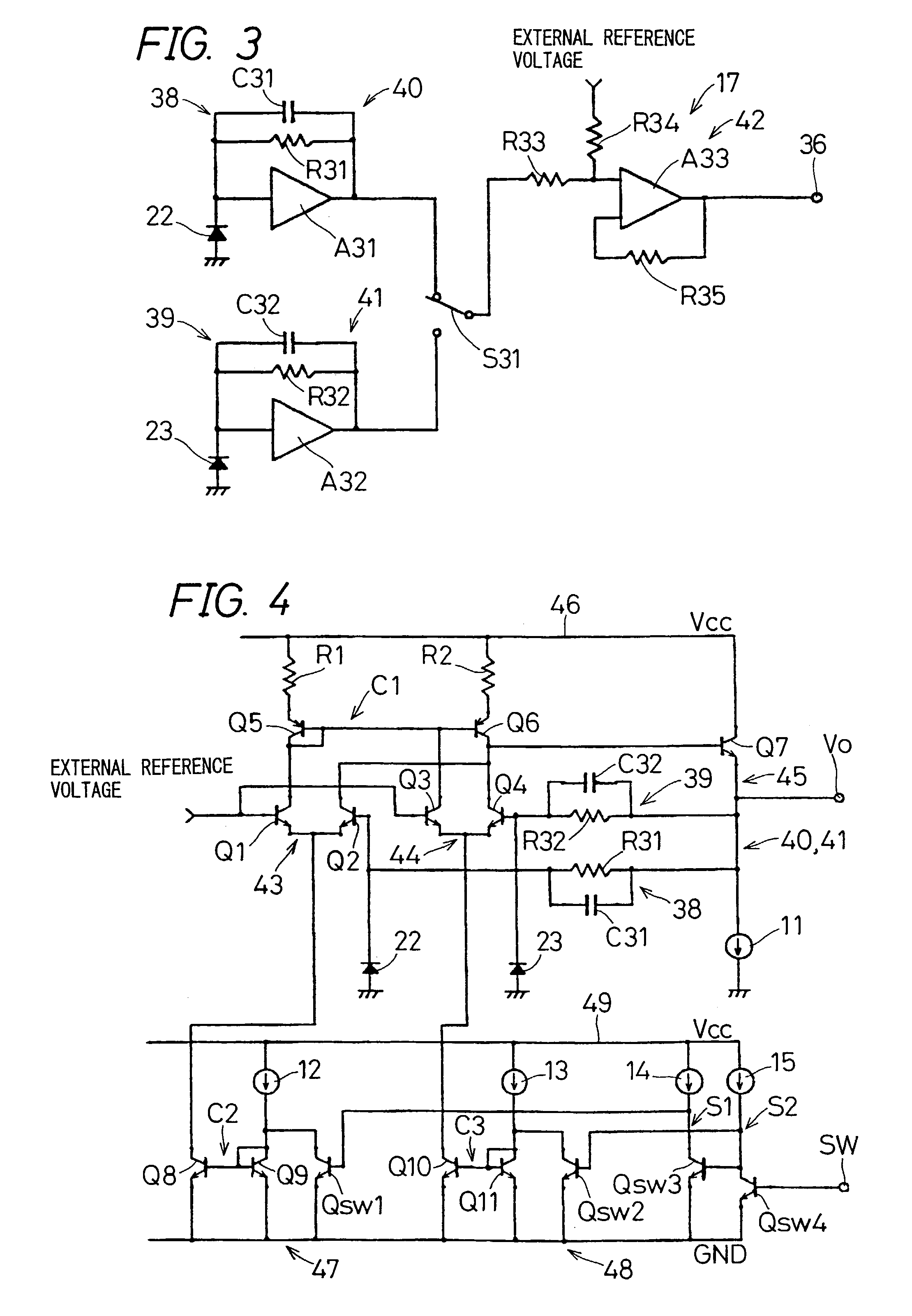Light receiving amplification element
a technology of light receiving and amplifier, which is applied in the field of light receiving amplifier, can solve the problems of increasing the number of parts, increasing the cost of progress related to the development of the project, and increasing the complexity of the optical design, so as to reduce the cost of chips caused by the increase of the scale of the circuit, reduce the cost of chips, and prevent the effect of saturation
- Summary
- Abstract
- Description
- Claims
- Application Information
AI Technical Summary
Benefits of technology
Problems solved by technology
Method used
Image
Examples
embodiment 1
(Embodiment 1)
[0076]FIG. 1 is a side view of the optical pickup apparatus in the embodiment 1 of the invention.
[0077]Referring to FIG. 1, an optical pickup apparatus 11 is provided with a semiconductor two-wavelength laser element (hereinafter referred to as a two-wavelength laser) 16 which acts as a light source. The two-wavelength laser 16 forms two laser emitting points for different wavelengths on the same substrate. Reference numeral 16a denotes a first emitting point for DVD (650 nm wavelength) and reference numeral 16b denotes a second emitting point for CD (780 nm wavelength). An optical lens 13 comprising a prism 15 and a condensing lens 14 is arranged on a light path from the two-wavelength laser 16 to an optical disk 12. Furthermore, the optical pickup apparatus 11 is provided with a light receiving amplification element 17 having a light receiving portion for receiving laser light which is reflected by the optical disk 12 and is reflected by the prism 15 via the optical ...
embodiment 2
(Embodiment 2)
[0109]FIG. 5 is another equivalent circuit block diagram of the light receiving amplification element for outputting light signals sent from the two main light receiving portions corresponding to the two wavelengths in FIG. 2 as electric signals.
[0110]Here, the different points from FIG. 3 are as follows:
[0111]Output points of signals of the two light receiving portions 22 and 23 are connected to each other and output of signals of the two light receiving portions 22 and 23 are inputted to each of the two trans-impedance type amplifiers 40 and 41.
[0112]In addition, the values of the feedback resistances R31 and R32 are different in the two trans-impedance type amplifiers 40 and 41, and the value of the resistance R31 is set so as to be optimum sensitivity (i.e. gain) for a reproduction only optical disk having high reflectance, and the value of the resistance R32 is set so as to be optimum sensitivity (i.e. gain) for a rewritable optical disk having low reflectance. In...
embodiment 3
(Embodiment 3)
[0115]FIG. 6 is still another equivalent circuit block diagram of the light receiving amplification element for outputting light signals sent from the two main light receiving portions corresponding to the two wavelengths in FIG. 2 as electric signals.
[0116]Here, the different points from FIG. 5 are as follows:
[0117]In the feedback circuit 39 of the second trans-impedance type amplifiers 41a, a clamp circuit 50 comprising a resistance R36 and diodes D1 through D3 is connected in parallel with the second feedback resistance R32 and the second capacity C32, and the second feedback resistance R32 is set as sufficiently smaller value than the first resistance R31 so that the second feedback resistance R32 is adaptable to large quantity of light at the time of writing operation (R31>>R32).
[0118]The first trans-impedance type amplifiers 40 comprising the first amplifier A31, the first feedback resistance R31 and the first capacity C31 is set to be used for reproduction and t...
PUM
| Property | Measurement | Unit |
|---|---|---|
| wavelength | aaaaa | aaaaa |
| wavelength | aaaaa | aaaaa |
| wavelengths | aaaaa | aaaaa |
Abstract
Description
Claims
Application Information
 Login to View More
Login to View More - R&D
- Intellectual Property
- Life Sciences
- Materials
- Tech Scout
- Unparalleled Data Quality
- Higher Quality Content
- 60% Fewer Hallucinations
Browse by: Latest US Patents, China's latest patents, Technical Efficacy Thesaurus, Application Domain, Technology Topic, Popular Technical Reports.
© 2025 PatSnap. All rights reserved.Legal|Privacy policy|Modern Slavery Act Transparency Statement|Sitemap|About US| Contact US: help@patsnap.com



